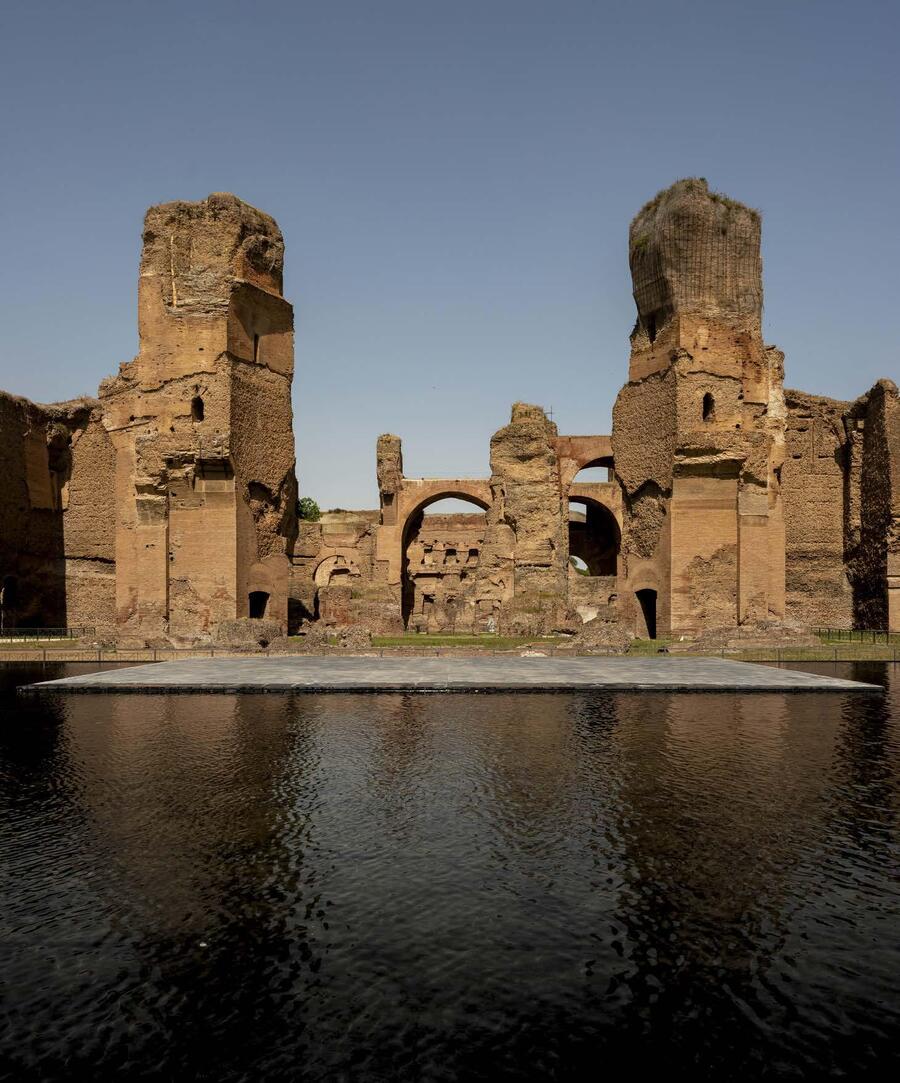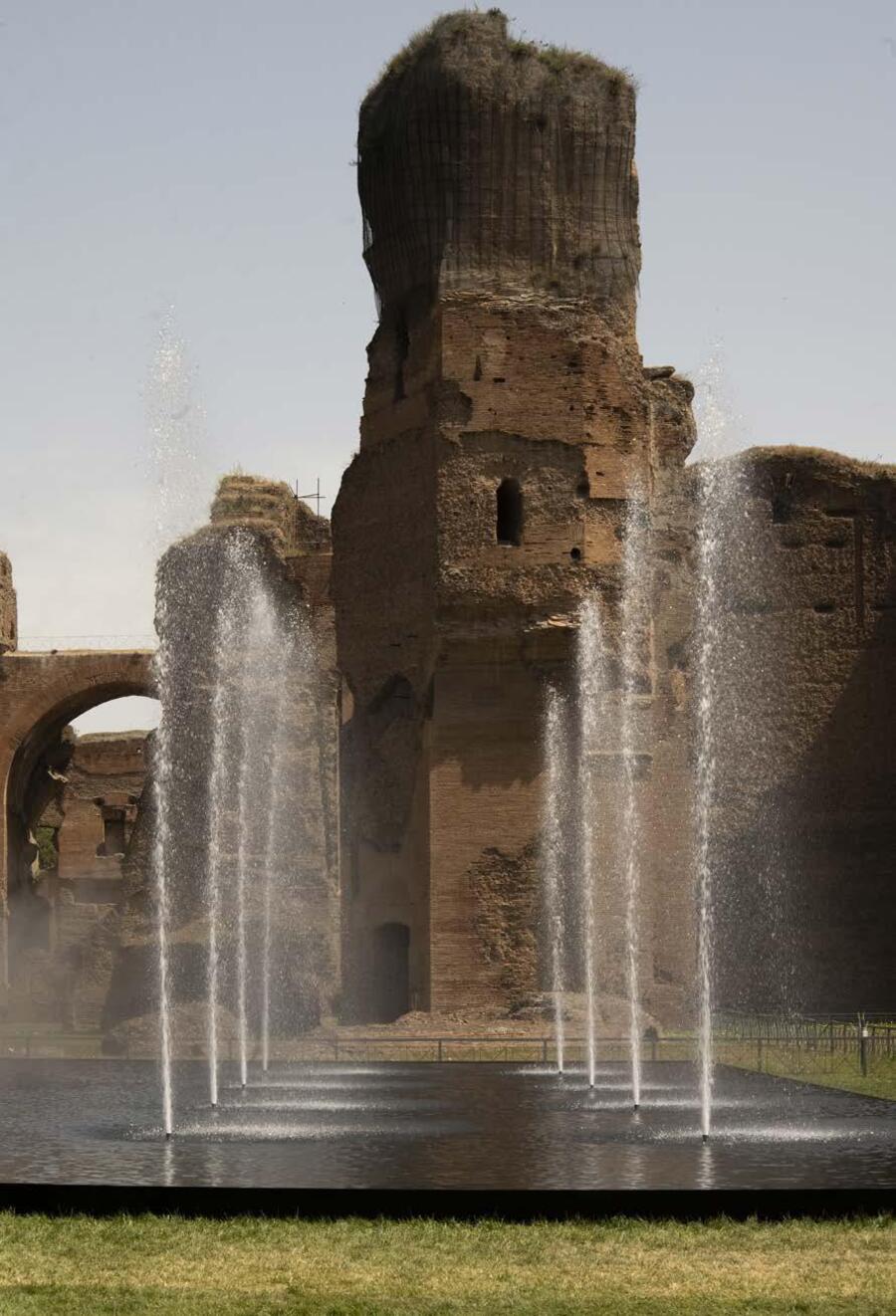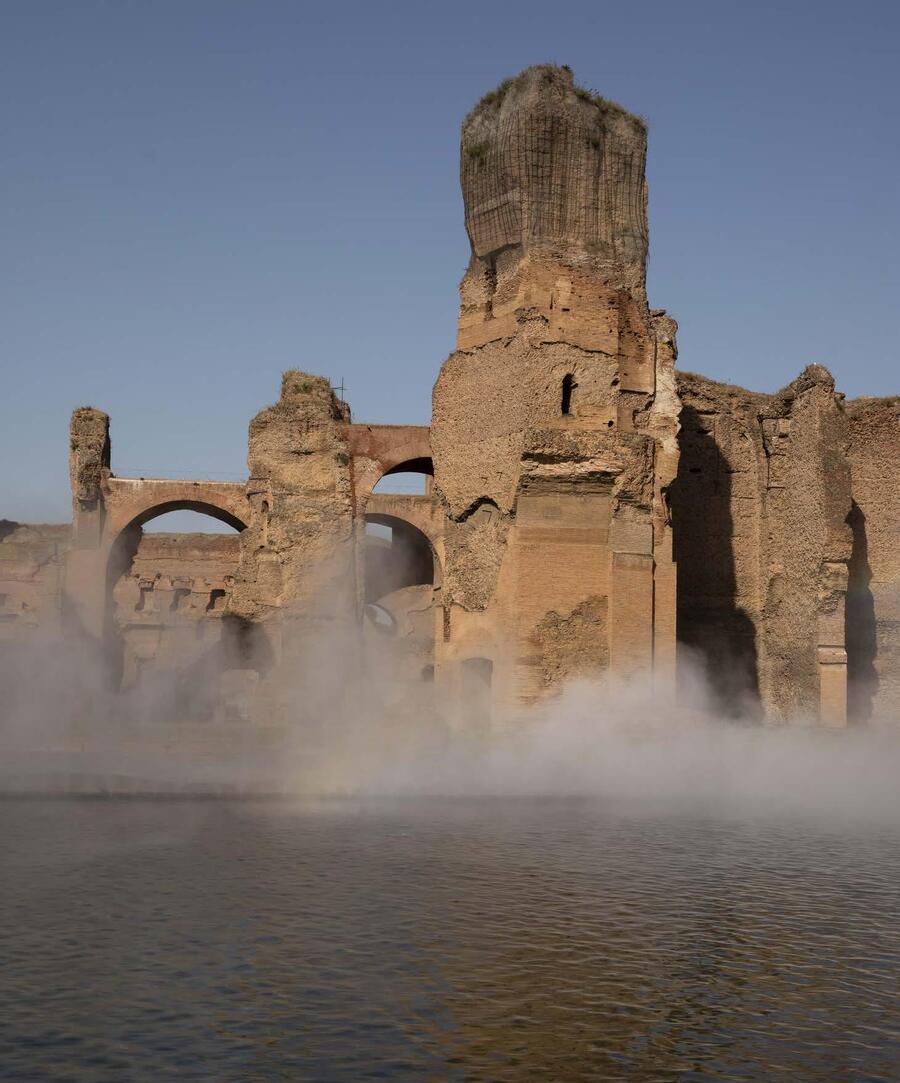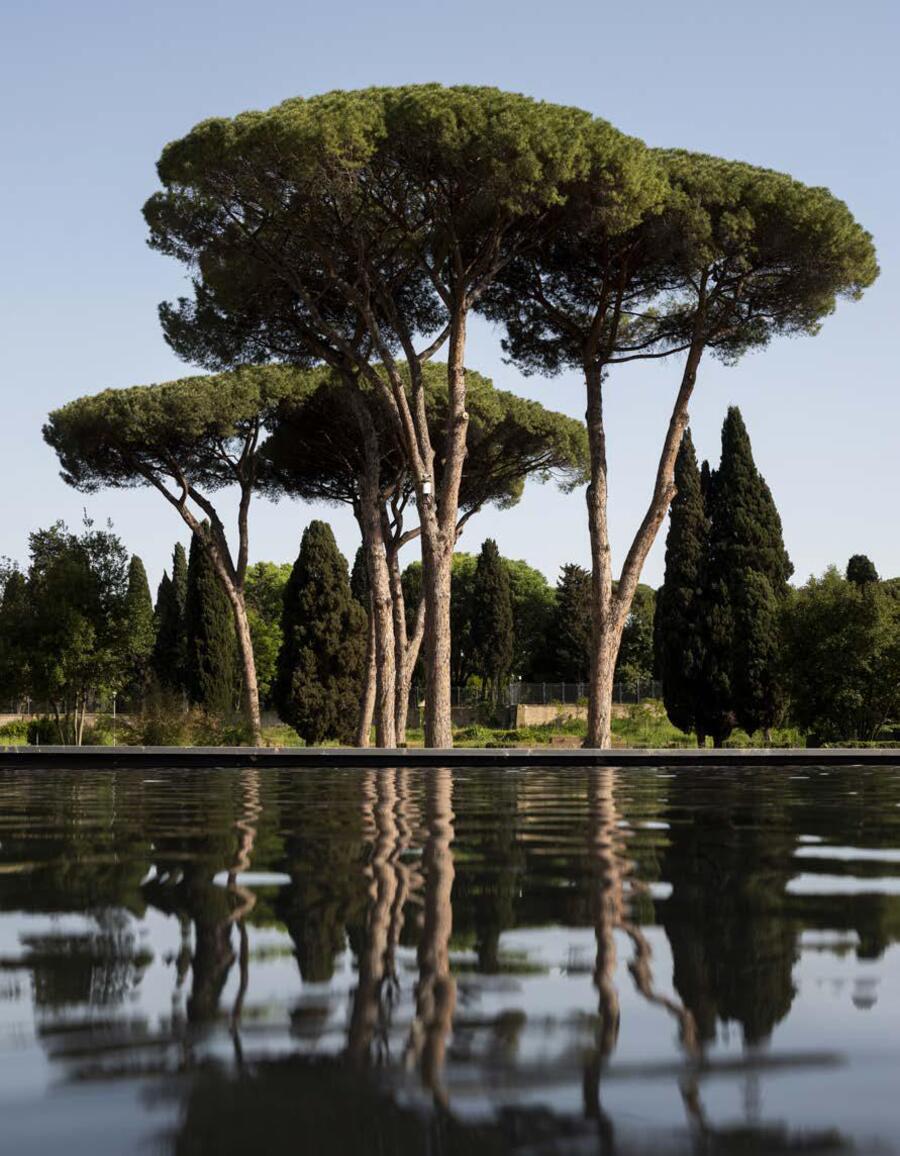
THE WATER MIRROR

PHOTOS: GIULIO GHIRARDI











According to Hannes Peer
By Alessandra Laudati for Architectural Digest, May 27, 2024
Hannes Peer's Water Mirror for the archaeological complex is an ambitious project that breathes new life into the ancient Baths of Caracalla in a contemporary way. He has worked on the Water Mirror project at the Baths of Caracalla to enhance the monumental complex, which will host theatrical performances, conferences, dance shows, and classical music concerts.
"Our greatest mistake is to try to awaken in each person the qualities they do not possess, while neglecting to cultivate those they do." – Marguerite Yourcenar, Memoirs of Hadrian
The defining quality of the Baths of Caracalla is water—an essential element from the past that must be recreated and rediscovered through the site's history, as Yourcenar, a profound connoisseur of ancient Rome, suggests. Now, thanks to an important and bold project envisioned by architect Hannes Peer in collaboration with architect Paolo Bornello, strongly supported by Mirella Serlorenzi, director of the Baths of Caracalla, and realized under the supervision of Daniela Porro, the Special Superintendent of Rome, the Water Mirror will revive the vitality and power of this element. This evocative architectural installation aims to recreate the atmosphere of an ancient space.
The stage covers an area of 300 square meters, while the pool spans 1,000 square meters. The pool’s linear form intentionally recalls that of the Natatio, with simple lines that, through a play of presence and absence, place the monument and the visitor at the center, with a stage on the water.
The Thermae Antoninianae, an extraordinary complex in terms of size and decoration, is one of the best-preserved imperial buildings of antiquity. Built at the initiative of Emperor Marcus Aurelius Antoninus Bassianus, known as Caracalla, son of Septimius Severus, they were inaugurated in 216 AD. The rectangular layout, typical of "grand imperial baths," was not just a place for bathing, sports, and body care but also for socializing and studying. The central block, dedicated to the baths, was arranged along a single axis with the caldarium, tepidarium, frigidarium, and natatio in sequence. Symmetrically arranged on the sides were two gymnasiums and changing rooms. The perimeter surrounding the central area housed water cisterns, two symmetrical libraries, large exedras, main entrances, and commercial spaces (tabernae).
The Water Mirror, designed by Hannes Peer, marks the beginning of a revolution at the Baths of Caracalla, transforming them into an archaeological site reimagined with contemporary design, embracing best practices in conservation, restoration, and enhancement to make the Severan complex a leading cultural attraction in Rome.
The heart of the complex was its underground area, where hundreds of slaves and specialized workers operated the baths' sophisticated technological machinery: a labyrinth of large carriageable galleries containing wood storage, a mill, heating systems, furnaces, and boilers, as well as an intricate network of lead pipes for water supply and distribution.
Rising only 10 centimeters from the ground, the Water Mirror serves multiple functions—a sort of theater of and on the water, equipped with a real stage for cultural and performative activities, merging art and functionality. The black-colored stage, matching the pool, has a minimal height difference of just 5 centimeters and, thanks to its considerable size, allows for theatrical performances, dance shows, classical music concerts, conferences, meetings, and lectio magistralis. This initiative redefines the visitor's experience, turning them from passive observer to protagonist of the space and events.
Water: The Protagonist Connecting Past and Future
Walking into the Baths of Caracalla, it's inevitable to imagine where the water once flowed—where people swam, relaxed, and spent a day devoted to well-being. Where was the water? How did the numerous visitors move between pools and fountains? Thanks to this innovative project, it will now be possible, at least in part, to relive the site's former vitality. A large reflective water surface will mirror the grand architecture of the baths, transforming the space into a home for contemporary art, performances, and creativity.
At the bottom of the Water Mirror, 20 fully submerged water jets, accompanied by an equal number of spotlights, will create dynamic water and light effects. The stage is bordered on three sides by a warm-toned linear LED light, while the longer side features an atomization system capable of producing a mist that drifts toward the center of the pool, evoking the steam of the ancient heated rooms.
The Water Mirror: Hannes Peer's Work at the Baths of Caracalla
A pool with a linear form that intentionally recalls the Natatio, with simple lines that, through a play of presence and absence, focus attention on the monument and the visitor. The stage on the water will host theatrical performances, conferences, dance shows, and classical music concerts, challenging the traditional perception of an archaeological site and turning the visitor into an active participant in the space and its events.
The project aligns with the vision of the Special Superintendency of Rome to restore and enhance the monumental complex and gardens of the Baths of Caracalla—a true revolution beginning with the Water Mirror and set to continue with innovative interventions throughout the archaeological site.
The Water Mirror is only the first step in a master plan designed by architect Hannes Peer, which will unfold over several years, following key guidelines and an unyielding principle:
"An integral project aimed at restoring the perception of these places as they were in antiquity," explains Mirella Serlorenzi, director of the Baths. "This water mirror is the first element; water, absent for over a thousand years, returns in a respectful yet decisive way through a refined interplay of presence and absence, with the mirror as its synthesis."
Thanks to numerous fully submerged jets, the water feature will offer light and water shows, with mist projected at the center of the pool to recreate the atmospheric sensation of the ancient heated baths.
"As an architect," says Hannes Peer, "I envisioned transforming nostalgia, culture, and the valuable knowledge I have acquired into a vision for the future—creating an element that bridges the past and brings its emotions back to life. My idea of 'nostalgic utopia' is to look to the past in order to see the future."
The Baths of Caracalla aim to be a pioneering example, offering Rome a new way to conceive, experience, and enhance cultural heritage sites.
Until September, the venue will serve as the location for the Opera di Roma season, after which it will once again be open to the public in its entirety.
"In a play of reflections, the Natatio emerges from the bath complex and aligns axially within the gardens, duplicating the imposing Caldarium—a contemporary gesture, just as our understanding of the ruins is contemporary, creating a kind of conceptual metaverse that reactivates the memory of the ancient function of the Baths through water and mist." – Mirella Serlorenzi, Director of the Baths of Caracalla.